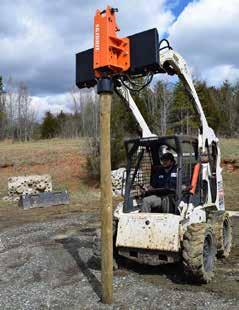
4 minute read
Updates for ASTM 1184
from Fence News June 2023
by fencenewsusa

Standard Specification for Industrial and Commercial Horizontal Slide Gates
As a fence professional, are you aware of the work being done by ASTM and others such as Underwriters Laboratory (UL) to enhance the safety and protection for the fence industry? Are you aware that tragedies and fatalities happen often in our industry? If you are aware of ASTM F2220 and UL325, did you know these standards were written to provide safety and protection for all gates that are automated?
If you answered no to any of the preceding questions, the information below is important. Our industry has placed a tremendous emphasis on F2200 and UL325 for automated gates, but we haven’t placed the same focus on manual gates. What most fence professionals do not realize is that injuries and fatalities occur with manual gates as well. As research shows, our industry has seen an increase in manual gate injuries and fatalities. The updated ASTM F1184-16 standard will help prevent these.
ASTM 1184-16 is the standard specification for industrial and commercial horizontal gates and has always been part of the fence standards, but now has been enhanced to provide more focus on fall over protection. We see manual slide gates like overhead, v-groove, roll and cantilever gates that are not automated, and as an industry, we haven’t taken the necessary requirements to protect these gates from fall over, but with the updates on F1184-16, we are now required to do so, regardless of manual or automated. The only way to increase awareness is through education for both manual and automated gate installations. Is your company doing enough to educate your team and your consumers? As an industry, we have worked diligently to educate, but the industry professionals have taken a lack luster attitude towards adopting the standards as a company practice.
The ASTM F1184-16 was adopted by committee on October 13, 2022, and the revisions for the classification and requirements are now better defined. Below are highlights of the updated standard.
Classification
4.1.1 Type I – Overhead Slide – Any horizontal slide gate supported only from above.
4.1.2 Type II – Cantilever Gate – Any horizontal slide gate spanning as opening lacking a top or bottom support within that opening. Type II gates shall be supplied in one of two classes.
• 4.1.2.1 Class I – Steel frame gates and aluminum frame gates using external rollers.
• 4.1.2.2 Class II – Steel frame gates and aluminum frame gates using internal rollers.
4.1.3 Type III- Rolling gate- Any horizontal slide gate that requires support on grade to traverse the gate opening. Type III gates shall be supplied with one of two classes.
• 4.1.3.1 Class I – Steel frame gates and aluminum frame gates using an on-grade track support and guide the entire gate.
• 4.1.3.2 Class II – Steel frame gates and aluminum frame gates using a supporting pipe track at the trailing edge and an on-guide roller support at the leading edge of the gate.
General Requirements
1. Gates shall be designed, constructed, and installed to not fall over more than 45 degrees from the vertical plane, when a gate is detached from the supporting hardware.
2. Positive stops shall be required to limit travel to the designed fully open and fully closed positions. These stops shall be installed at either the top of the gate, or at the bottom of the gate where such stops shall horizontally or vertically project no more than is required to perform their intended function.
3. All weight bearing exposed rollers 8 ft (2.44 m), or less, above grade shall be guarded or covered.
4. A gap, measured in the horizontal plane parallel to the roadway, between a fixed stationary object nearest the roadway (such as a gate support post) and the gate frame when the gate is in either the fully open position or the fully closed position, shall not exceed 2 1⁄4 in. (57 mm).
Exception: All other fixed stationary objects greater than 16 in. (406 mm) from the gate frame shall not be required to comply with this section.
5. All gates shall be designed with sufficient lateral stability to assure that the gate will enter a receiver guide.
• 5.1 Single Panel: Receiver guides shall be recessed behind the leading edge of the receiver post or fixed object. Exception: Receiver guides mounted greater than 8 ft (2.44 m) above grade shall not be required to comply with this section.
• 5.2 Dual Panels: Receiver guides, if used, may be installed on either panel, and shall include a cross-sectional area of 9 in.2 (5806 mm2) or greater as measured on the leading edge of each guide.
6. Gates shall be designed, constructed, and installed such that their movement shall not be initiated by gravity and shall not result in continuous, unimpeded movement in either linear direction of it travel.
I would like our fence industry professionals to make a concerted and focused effort to adopt these standards and make a difference in a positive manner.
Tony Thornton is a 45+ year veteran of the fence industry and is a subject matter expert in all areas of fence and gate automation. His passion is to elevate and promote the fence industry in a professional manner and provides consulting services to support fence industry owners in understanding how to implement effective procedures into their operation and maximize their profitability.
Thornton Fence Consulting Group
4261 East University Drive
PMB #30-108
Prosper, Texas, 75078
Phone: 972-533-3658
Email: info@fenceconsultinggroup.com
Website: www.fenceconsultinggroup.com
Patented accumulator reduces recoil, adds
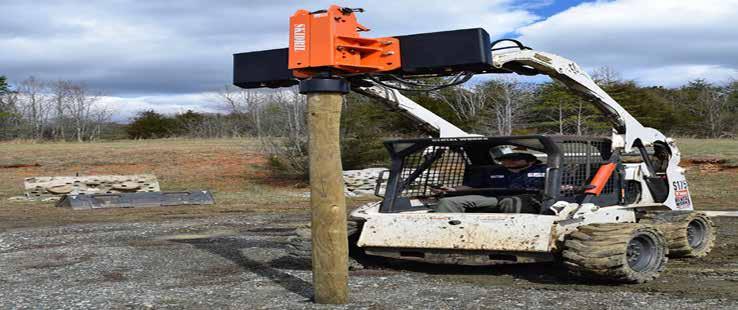
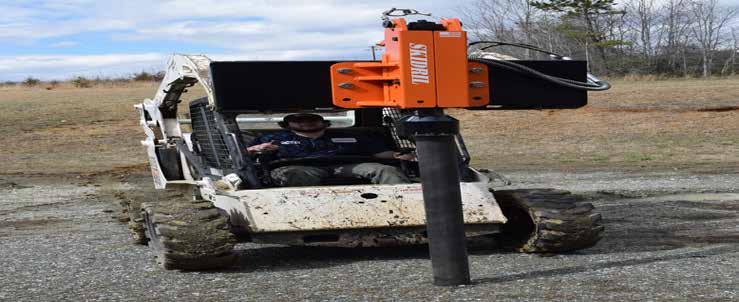
Near perfect center of gravity
Highest hitting force per pound of tool
Self lubrication prevents damage
Closed circuit hydraulics creates no exhaust
Drives wood and steel up to 6” diameter,
Drives stakes, rods and pins
Runs off of skid steer loaders and tractors
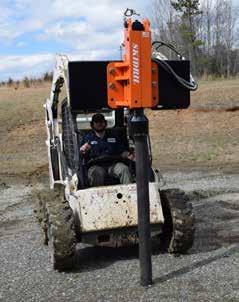
Can be slung or hard-mounted
1 year parts and labor warranty plate)
Dimensions: 40 x 18 x 12 (main body without quick-mount plate)
Impact Energy: 350 Ft-lb
Impact Energy: 350 Ft-lb
Flow: 5.5 - 7 GPM PSI
Weight: 496 LB w/quick-mount plate & tool
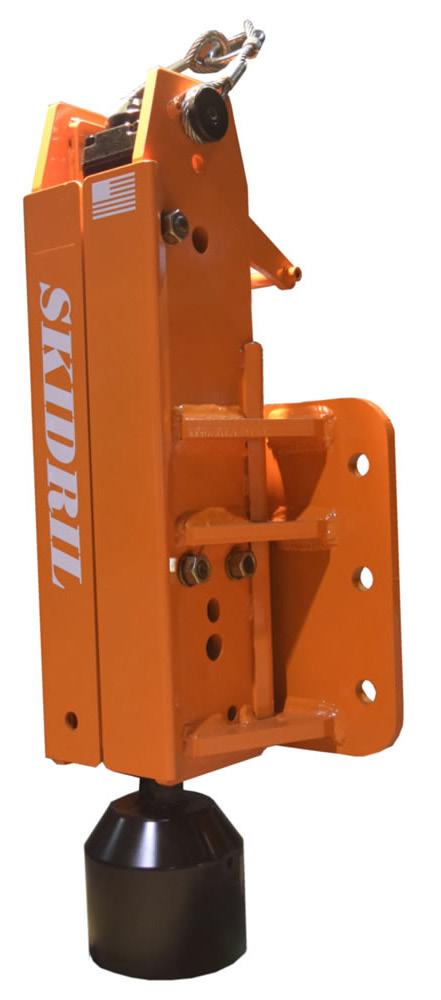

Flow: 5.5 - 7 GPM
